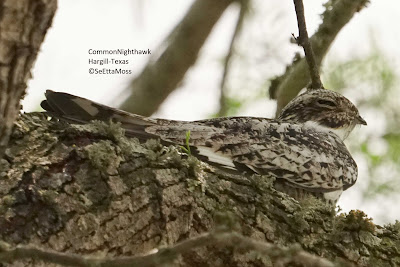Black-chinned Hummingbird that performed several Display Dives

Yesterday I watched a male Black-chinned Hummingbird performing several Display Dives that Birds of North America online (fee site) says, "...during breeding season Dive Display assumed to be a component of courtship." Right after the dives it flew off into the vegetation. While I only saw the hummer in flight I did see the purple band at the bottom of it's black chin clearly when the light hit it just the right way. I checked references and though this species is present in the Lower Rio Grande Valley during breeding season there are not a lot of records of that. So I returned to McAllen Nature Center tonight at the same time as when I saw the Display Dives last night to see if I could refind this bird. And I did, it was only a short distance from where I observed it doing dives last night. Unfortunately it perched high in a snag and with lateness of day (7 pm) the photos did not come out as well as I would like. I did go get Jaxon R...




